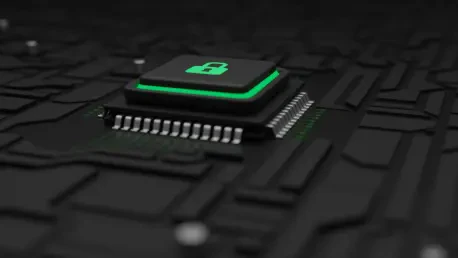The discovery of a severe vulnerability in the Cisco IOS XE Wireless LAN Controller software has sent ripples of concern throughout IT departments across industries. Identified as CVE-2025-20188, this security flaw is critically rated at a perfect 10.0 by Cisco, indicating its potential for devastating security breaches if not promptly addressed. At the heart of the issue is a hardcoded JSON Web Token (JWT) secret, a vulnerability that leaves systems open to path traversal attacks and permits attackers to upload malicious files or execute arbitrary commands. This flaw, patched by Cisco on May 7, represents a formidable challenge for network administrators, who now confront the need to swiftly update their systems to avert possible exploits that could lead to a total system compromise.
The Threat of Hardcoded Credentials
Embedding hardcoded credentials within software applications presents a significant security risk, often exploited by malicious actors. In the case of the Cisco IOS XE Wireless LAN Controller software, the default JWT secret “notfound” is automatically used when a crucial configuration file is missing. This fallback mechanism, rather than serving as a safeguard, effectively becomes a weak spot that unauthorized individuals can exploit. With minimal effort, attackers can generate legitimate JWT tokens to breach systems, gaining unauthorized remote access and potentially full control over the affected devices. By bypassing insufficient path validation, these intruders can execute remote code with root privileges, granting them the ability to plant persistent threats such as malware and backdoors, intercept sensitive network data, and navigate through the network with impunity, causing significant disruptions.
Security experts caution against the continued use of hardcoded secrets, which are considered a critical anti-pattern in secure software design due to their inherent risks. Experts like Casey Ellis and Nic Adams highlight that when these poorly conceived practices are entrenched into software, they compound the challenges for security teams who must now engage in damage control. They further stress that the widespread use of Cisco IOS XE in enterprise networks means a successful exploit could have catastrophic impacts. For organizations relying on Cisco’s software, swift action to patch the vulnerability is non-negotiable. For systems where immediate patching is unfeasible, security professionals advocate for secondary protective measures, such as enforcing stringent access restrictions, closely monitoring file activities, and shutting down extraneous services to minimize exposure to risk.
Consequences of Ignoring the Flaw
Recognizing and addressing the full implications of CVE-2025-20188 is crucial for maintaining cybersecurity integrity. The flaw’s exploitation is notably straightforward, leveraging the hardcoded token to permit high-level system access and manipulation. Such vulnerabilities not only allow for the execution of malicious code but also create avenues for attackers to establish ongoing unauthorized presences within organizational networks. The potential for attackers to intercept ongoing network traffic and lateral movement within an organization poses a severe threat, especially if sensitive data is at stake. This could lead to confidentiality breaches, massive operational disruptions, or worse, undetected compromises that lead to large-scale data exfiltration.
Industry consensus strongly advises that the CVE-2025-20188 vulnerability demands a swift, coordinated response to prevent it from becoming an exploited vector in cyberattacks. The seriousness attributed to this flaw reflects the broader risks associated with inadequate system defenses, which, if not resolved, could lead to significant operational, financial, and reputational damage. It’s imperative for network administrators to prioritize immediate system updates and adopt best practices in security postures, preempting potential breaches by ensuring that similar vulnerabilities are not just patched but entirely avoided in future system designs.
Prioritizing Proactive Security Measures
Embedding hardcoded credentials in software poses severe security risks, frequently exploited by cybercriminals. Cisco IOS XE Wireless LAN Controller software exemplifies this issue by defaulting to the JWT secret “notfound” when a necessary configuration file is absent. Instead of providing a robust safeguard, this fallback becomes a vulnerability easily exploited for unauthorized access. Attackers can craft legitimate JWT tokens with minimal effort, gaining control over devices remotely. They can bypass inadequate path validation, execute remote code with root privileges, infiltrate networks, plant persistent threats like malware or backdoors, intercept sensitive data, and wreak havoc unchecked.
Security experts caution that hardcoded secrets represent critical flaws in secure software development. Figures like Casey Ellis and Nic Adams underscore the danger, noting that these poor practices complicate security efforts, especially given Cisco IOS XE’s prevalence in enterprises. Organizations must urgently patch vulnerabilities. When that’s not possible, stringent access controls, monitoring file activities, and disabling unnecessary services are vital to mitigate risks and protect systems.









